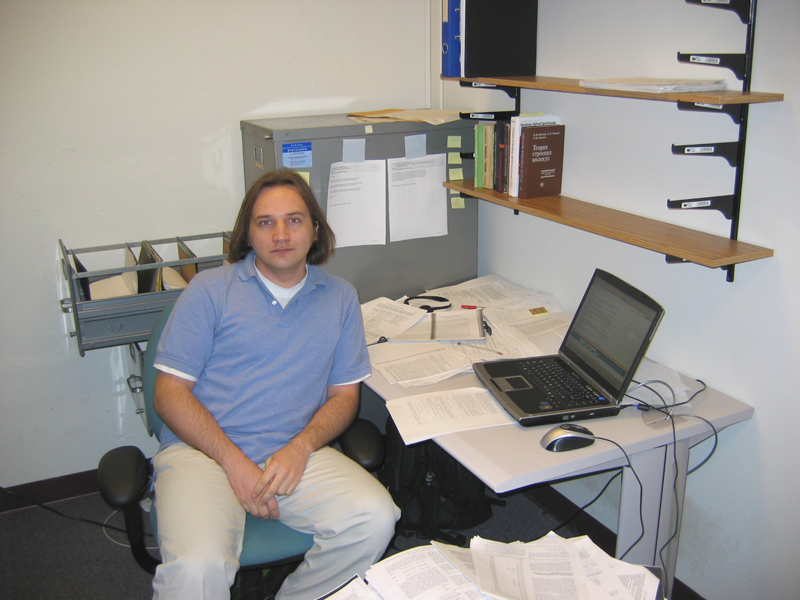
Maksym Kryvohuz
1) Quantum-classical correspondence in response theory.
Response theory describes all experimental measurements and is the basis for computing linear and non-linear spectra. Yet, the simple classical limit of quantum response functions, often used in MD simulations of large systems, leads to divergence. I study the origin and general features of this divergence and explore the limits of applicability of classical response theory.
2) Signature of quantum chaos.
From the classical point of view, polyatomic molecules may have two different regimes of vibrational motion: quasi-periodic (usually at low energies) or chaotic (usually at high energies). Optical response functions carry detailed information about the underlying systems dynamics and thus should behave differently for different regimes of motion. Indeed, classical response functions are good indicators of chaos since they incorporate stability matrices that diverge linearly for quasi-periodic regime and exponentially for chaotic regime. But our world is quantum mechanical and response functions measured in experiment are quantum. Can quantum response function carry information about chaos? This question may be answered by looking at different level statistics of quantum "quasi-periodic" and quantum "chaotic" system.
3) Influence of thermal bath on vibrational dynamics of multiatomic molecules.
Multiatomic molecule can be represented as a system of coupled anharmonic oscillators. The simplest example is three-atomic ABA-type molecule which can be represented as two coupled Morse oscillators. Because of anharmonicity, the dynamics of ABA molecule can be either in normal-mode regime (collective oscillation of AB-bonds) or local-mode regime (independent in classical sense oscillation of AB-bonds). If ABA molecule is coupled to thermal bath, its equilibrium dynamics should be of normal mode type, yet after some time the regime of motion switches to local-mode behavior. I study the characteristic time scale of normal-to-local mode transition.

